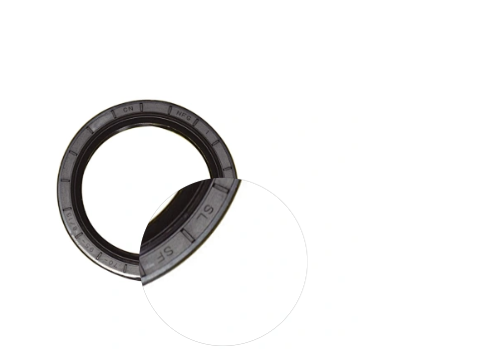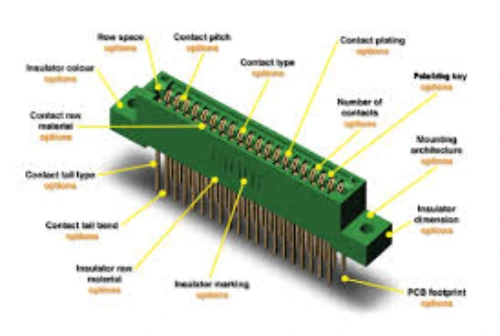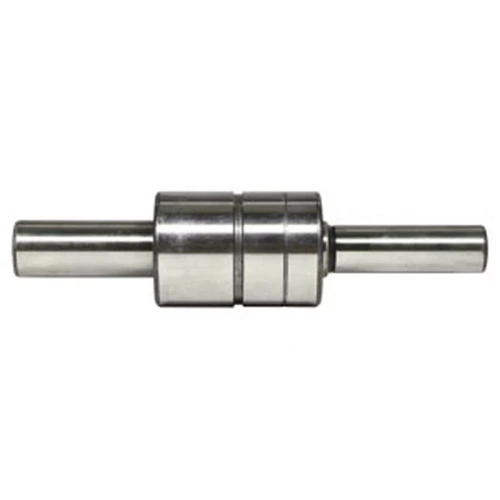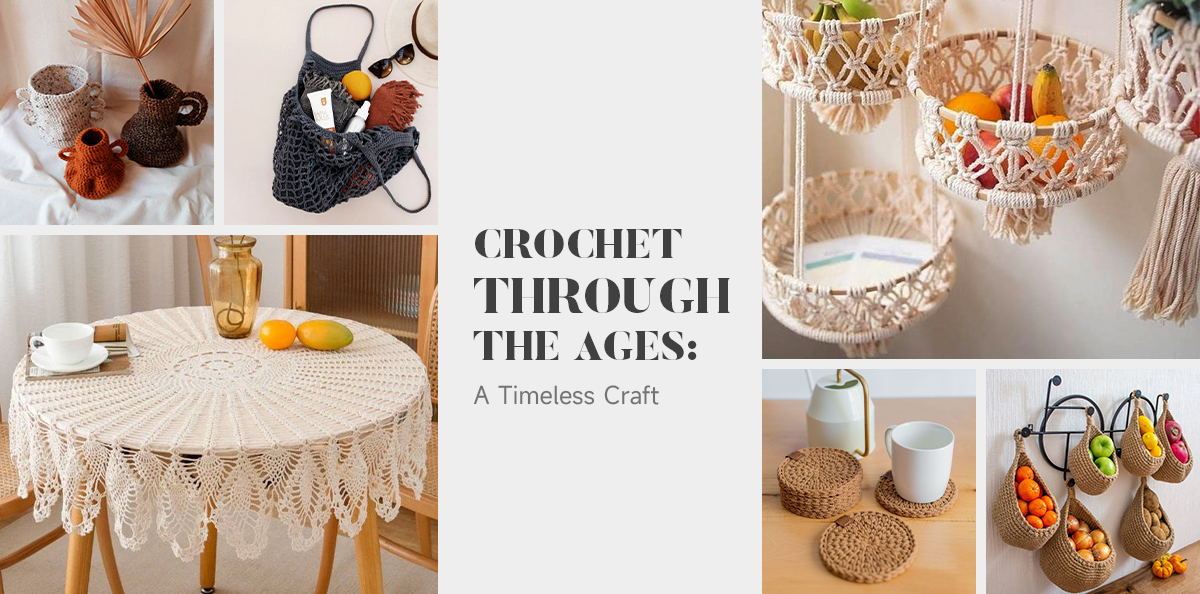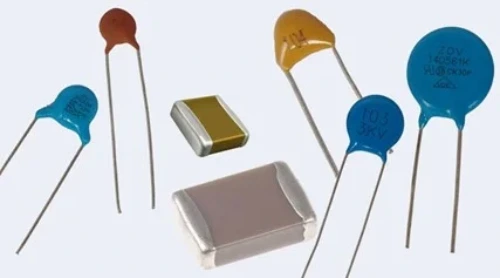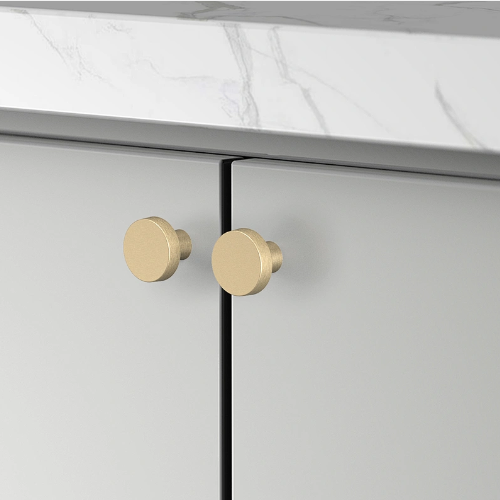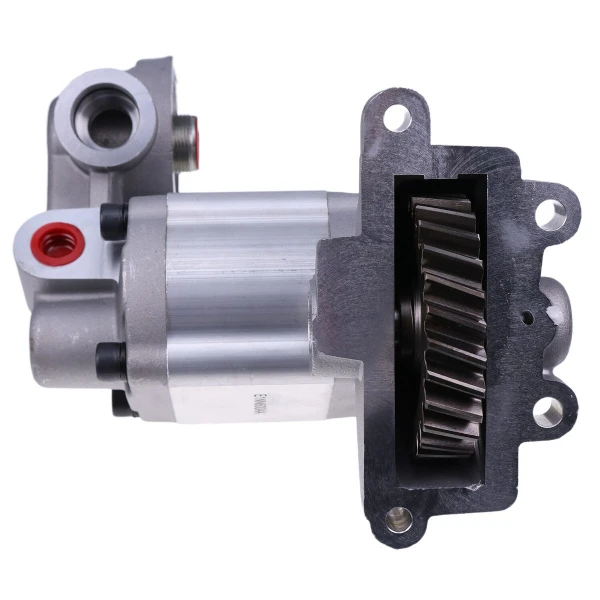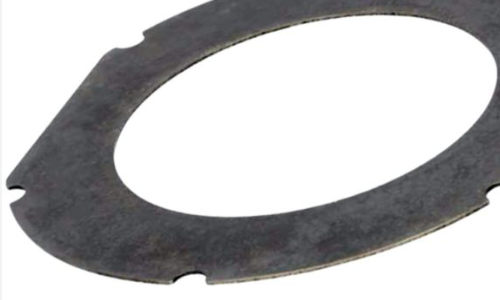
汤喆's Posts (134)
Enhancing Dining Experiences: Table Top Menu Holders

Importance of Table Top Menu Holders
Types of Table Top Menu Holders
Design Considerations
Enhancing the Dining Experience
Case Studies and Examples
Future Trends
Conclusion
Designing a Fresnel Lens Mold

Understanding Fresnel Lens Molds
Lens Injection Molding Process
Applications of Fresnel Lenses
Why We Need A Fresnel Lens Mold
Conclusion
The Best Caster Wheels For Furniture

The Value of Choosing a Quality Caster
Consider the Floor Type
Caster Wheel Recommendations:
Consider the Weight of the Furniture
Weigh Your Options Carefully
Additional Features:
Similar to mini Peripheral Component Interconnect Express (mPCIe) connectors, M.2 connectors support various signal interfaces and storage protocols, optimizing the use of the PCIe bus. M.2 connectors are available for PCIe 3.0, PCIe 4.0, PCIe 5.0, Serial ATA (SATA 3.0), and SuperSpeed USB.
M.2 connectors provide the bandwidth necessary for AI/ML accelerators and solid state drives (SSDs). They are identified by their dimensions and keying. For instance, a 2260 M.2 module is 22 mm wide and 60 mm long. Additionally, M.2 modules feature recesses on the plug connector strip to prevent incorrect insertions. Common key formats include B, M, A, and E, along with combinations like B+M and A+E.
Benefits of M.2 for AI/ML
Supports High Density Solutions: The smallest M.2 devices are 18% smaller than the smallest mPCIe devices, enabling more compact designs.
Flexibility: M.2 ports are versatile and can accommodate multiple sizes of M.2 cards.
Low Power Consumption: M.2 devices are limited to 7W or less, making them energy efficient.
High Speed: M.2 slots can support two to four PCIe lanes, with PCIe 4.0 providing a transfer rate of 16 Gb/s per lane.
Advanced PCIe M.2 Gen 5 Connectors: These connectors have 67 contacts on a 0.50 mm pitch, support single- and double-sided modules, and require less board space compared to mPCIe connectors. Additional features include:
Various connector heights and keying options
Support for angled insertion of modules
Availability in right angle or vertical orientations
EDSFF for Storage
The EDSFF (Enterprise and Data Center SSD Form Factor) specification was developed by the Storage Networking Industry Association's SSD Small Form Factor (SNIA SFF) Technology Affiliate group to meet data center storage needs. It was created to overcome the limitations of legacy form factors by providing an optimized specification for NAND flash memory and other devices. The benefits of the EDSFF connector specification include:
Enhanced Signal Integrity: Supports PCIe 5.0 and PCIe 6.0.
Unified Connector Standard: A single connector standard that supports all EDSFF configurations.
Versatility: Flexible enough to support chassis and backplane applications.
Higher Power Capacity: Supports power levels up to 70W.
OCP NIC 3.0 for More Power
The OCP NIC 3.0 specification offers three form factors: Small Form Factor (SFF), Tall Small Form Factor (TSFF), and Large Form Factor (LFF).
SFF and TSFF: These configurations can support up to 16 PCIe lanes and handle up to 80W of power to the NIC.
LFF: This configuration can support up to 32 PCIe lanes and handle up to 150W of power with a dual connector setup.
OCP NIC 3.0 is compatible with PCIe Gen 4 (16 Gb/s) on both the baseboard and the OCP NIC 3.0 card, and it is electrically compatible with PCIe Gen 5 (32 Gb/s). Each OCP NIC 3.0 card can handle up to 32 PCIe lanes and supports single-host, multi-root complex, and multi-host environments. Future iterations are expected to support differential pairs up to 64 G PAM4, with plans to upgrade to 112 G PAM4 and 224 G PAM4 further down the line.
Card Edge Connector Features
Contact Points: The connector has a series of contact points that align with the conductive traces on the edge of the PCB.
Slots and Guides: The connector often has slots and guides to ensure proper alignment and insertion of the PCB.
Variety of Sizes: They come in various sizes and pin configurations to suit different applications.
Durability: Designed to withstand repeated insertions and removals without degrading the contact quality.
Card Edge Connector Applications
Computers: Commonly used in computer expansion slots, such as PCI, PCI Express, and AGP slots.
Consumer Electronics: Found in devices like game consoles and certain types of audio/video equipment.
Industrial Equipment: Used in various industrial machines and control systems.
Telecommunications: Employed in communication devices and systems for connecting various components.
Card Edge Connector Advantages
Simplicity: Easy to insert and remove, making them ideal for user-replaceable components.
Cost Effective: Generally cheaper to produce and implement than other types of connectors.
Versatility: Available in many configurations to meet different design requirements.
Card Edge Connector Disadvantages
Wear and Tear: Repeated use can lead to wear and loss of contact quality.
Environmental Sensitivity: Can be susceptible to dust and debris, which might affect performance.
Card Edge Connector Types
A card edge connector is a type of electrical connector used to connect a printed circuit board (PCB) to an external device. It is called "card edge" because it connects via the edge of the PCB, where conductive traces are exposed and act as contacts for the connector.
This type of board edge connector is engineered for high Signal Integrity (SI) on printed circuit boards (PCBs). Our card edge connectors, designed to maximize PCB real estate, offer performance reliability and design flexibility for the latest PCIe protocol solutions. The product portfolio includes right angle, surface mount sockets with 52 contacts for express mini cards and 76 contacts for display mini cards. Select models feature latches for different heights. Some products in this category can support multiple function add in cards and modules, including WiFi, Bluetooth, global navigation satellite systems, near field communication, and Wireless Gigabit Alliance (WiGig).
GUOYUAN ELECTRONICS can offer a wide range of pcb edge connector with different specifications and features. You can visit our website or contact us directly to inquire about card edge connector pcb offerings, specifications, pricing, and any other details you may need to make an informed decision.
References
EDSFF – A New SSD Form Factor for Next Gen Servers and Storage, Kioxia
How Artificial Intelligence (AI) Is Transforming NVMe SSDs, Microchip
PCIe M.2 Gen 5 Card Edge Connectors, Amphenol
The M.2 interface, Delock
Unlocking the Power of Cloud Storage and Compute with EDSFF SSDs, Solidigm
What Is The M.2 Expansion Slot?, Premio
The best sneakers for women may not always be the most glamorous purchase, but they are an essential part of many wardrobes. Whether you usually wear heels or have a collection of loafers and ballet flats, there will be a day when you reach for those comfortable stylish sneakers waiting in your closet. The ideal sneakers are versatile enough to match any outfit, whether you prefer an affordable classic or a luxury designer pair.
If you're looking for a starting point, you can't go wrong with the iconic sneaker brands. You can also choose based on material or silhouette, such as a leather low top or a canvas slip on. For street style credibility, consider high fashion collaborations or gorpcore options that blend utilitarian features with contemporary design. The key is to find the style you prefer—whether sporty, chunky, or slim—then decide on the colorway and material. Minimal white sneakers are popular for their versatility, complementing nearly any outfit, but depending on your color preferences, you might prefer a shoe that combines blacks, browns, or grays.
While there’s a time and place for flashy or trendy sneakers, having a pair of trainers with staying power is essential. These can become your signature shoe, effortlessly matching any outfit. From coveted designer iterations to timeless classics, choose from the following selection of women's sneakers that will never go out of style.
Timeless Leather
A leather sneaker is always a great place to start: the material improves with age and provides a snug, secure fit. Leather is a robust material that withstands wear and tear, making leather sneakers long lasting. At the same time, Leather molds to your feet over time, providing a customized, comfortable fit. Leather allows air to circulate, keeping your feet cool and reducing moisture build up. Leather has a classic, timeless look that improves with age, developing a unique patina over time.
Put it in Retro
Designers have been revisiting vintage inspired sneakers for a while now. These sneakers often feature a narrow silhouette that tapers at the foot, creating an elongated look. These retro sneakers often feature simple, clean designs that can easily be paired with a variety of outfits, from casual jeans to more polished looks. Also, Retro sneakers evoke a sense of nostalgia, bringing back memories of iconic fashion eras and adding a touch of vintage charm to your wardrobe.
Classic White
You can't go wrong adding a crisp white trainer to your lineup; it's the easiest sneaker to style and incredibly versatile. White trainers seamlessly complement any outfit, from casual jeans and a T shirt to more polished ensembles like a tailored blazer and trousers. Their clean, minimalist design makes them a wardrobe staple that can effortlessly transition from day to night. Whether you're dressing for a casual weekend outing, a day at the office, or a night out with friends, white trainers provide a chic, timeless foundation that enhances your look. Additionally, they pair well with a wide range of colors and patterns, making them a reliable go to choice for any fashion situation. Investing in a pair of white trainers ensures you have a reliable, stylish option that can adapt to any occasion and keep you looking effortlessly put together.
The Cool Girl Pick
Whether you consider it gorpcore or sporty chic, the street style set adores a practical, supremely comfy sneaker for everyday wear. These sneakers offer the perfect blend of functionality and fashion, making them a favorite among style enthusiasts. Sporty, Dad style sneakers, in particular, tend to be the most popular in this category. Their appeal lies in their accessible price points and the nearly constant stream of new arrivals, often available in limited edition colorways that keep the trend fresh and exciting.
Dad style sneakers provide exceptional comfort and support, ideal for those who are on their feet all day. With their chunky soles and cushioned interiors, they offer unparalleled comfort, making them a go to choice for long walks, running errands, or casual outings. Additionally, these sneakers often feature retro inspired designs, which add a nostalgic touch to any outfit while remaining thoroughly modern.
The Old School Canvas
You may recall canvas shoes as the original tennis sneakers, with plimsolls serving as their lighter weight counterparts for school gym classes. Nowadays, this breathable fabric is featured in a wide range of styles. Those who appreciate quiet luxury will be drawn to the latest interpretation: a sleek canvas design combined with breathable mesh.
Slip on and Go
You may have moved on from slip ons since graduating high school, but their enduring appeal is undeniable. With slip ons, you enjoy the effortless convenience of sliding your foot in and being instantly ready to go. These shoes offer a blend of comfort and ease that makes them a timeless choice for casual wear. Whether you're running errands, heading to the beach, or simply lounging at home, slip ons provide a laid back style that never goes out of fashion. Their simplicity and versatility make them a go to option for those who appreciate both comfort and practicality in their footwear.
Believe it or not, it’s already time to explore the key sneaker trends for summer 2024 — and we're excited about it. As you update your wardrobe with the latest spring and summer fashion trends, why not refresh your shoe collection too? This year brings a range of new and trendy options that are particularly noteworthy.
The prevailing theme is athletic, with slim, retro styles taking center stage in the 2024 sneaker trends (thanks to the rise of tenniscore). When it comes to colors, there are two main camps to choose from: neutrals such as ecru and black, and statement hues like bright yellow and vibrant pink that promise to dominate street style this season. You'll have ample opportunities to make a statement with your footwear, especially with metallic finishes and printed uppers gaining popularity.
Get ready to mix and match these stylish sneakers with your favorite summer outfits, whether you opt for a classic, understated look or decide to go bold with vibrant colors and eye catching patterns. This summer's sneaker trends offer something for everyone, ensuring you'll find the perfect pair to complement your personal style and elevate your seasonal wardrobe.
If you have any needs for ideal shoes sneakers, please contact HEVA for your best fit!
Types of Laboratory Cuvettes
Applications of Laboratory Cuvettes
How to Determine Cuvette Volume
Specification Details
Other Details and Considerations
Diagnosing Tractor Water Pump Bearing Failure

Structure of Tractor Water Pump Bearings
Functions and Features of Tractor Water Pump Bearings:
Types of Bearings Used:
Importance in Tractor Operation:
How Do You Test A Tractor Water Pump Bearing?
Summer fashion is ever evolving, with each year bringing new trends that captivate the hearts and wardrobes of style enthusiasts. The standout dress trend for summer 2024 is one that arguably never fades from fashion: the backless crochet dress.
This year, the crochet hollowed out dress has emerged as the undisputed star of summer. With its intricate patterns, lightweight feel, and versatile designs, the cover up crochet dress is a must have for anyone looking to stay chic and comfortable in the summer heat.
Also, fashion houses and brands are embracing a bohemian style that harkens back to the '70s, perfectly capturing the carefree, free spirited vibe of summer. However, just like the crochet skirt, the crochet dress has been updated for modern times with sleek silhouettes, intriguing cutouts, and innovative patterns. The result is a chic and versatile piece that has become a must have for any wardrobe.
The Art of Crochet: A Brief History
Crochet, a method of creating fabric by interlocking loops of yarn with a hooked needle, has a rich history dating back to the 19th century. Originally popularized in Europe, crochet was often associated with home decor items like doilies and tablecloths. Over time, it found its way into fashion, creating everything from cozy winter wear to delicate summer pieces. Today, crochet has been reinvented to suit modern tastes, and the crochet dress stands as a testament to this timeless craft.
Dress Trends: How To Wear Crochet In Summer 2024
In 2024, we've moved past overly prim crochet designs. Instead, embrace the minimalist variations that have dominated recent catwalks and stores. Seek out crochet dresses with sleek, curve-hugging silhouettes, natural hues, and unexpected cutouts or prints.
For inspiration, check out the immaculate crochet dresses from major brands, including their stunning patchwork versions. Whatever style you choose, pair it with minimalist accessories like the trending ring sandals, a sleek tube bag, or an oversized blazer. This will keep your look firmly rooted in 2024, rather than resembling '70s cosplay. It's the perfect blend of work and play.
Why Crochet Dresses are Perfect for Summer
Breathability and Comfort: One of the primary reasons crochet dresses are ideal for summer is their breathability. The open weave design allows air to circulate, keeping you cool even on the hottest days. Unlike synthetic fabrics, which can trap heat and cause discomfort, the natural fibers used in crochet dresses, such as cotton and linen, wick away moisture and provide a cooling effect.
Versatility in Style: Crochet dresses come in a wide range of styles, from mini dresses perfect for beach outings to maxi dresses suitable for evening gatherings. Whether you prefer a boho-chic look with fringe details or a more sophisticated style with intricate lace patterns, there's a crochet dress to match every aesthetic. The versatility of crochet dresses makes them suitable for various occasions, from casual beach days to formal summer events.
Sustainability: In an era where sustainability is increasingly important, crochet dresses stand out as an eco friendly fashion choice. Many crochet pieces are handmade, which reduces the environmental impact associated with mass production. Additionally, the use of natural fibers and the durability of crochet items mean they can last for years, reducing the need for frequent replacements.
Unique Patterns and Textures: The beauty of crochet lies in its intricate patterns and textures. Each crochet dress is a work of art, showcasing unique designs that add depth and interest to any outfit. From floral motifs to geometric shapes, the variety of patterns available in crochet dresses ensures that you can find a piece that reflects your personal style.
How to Style Your Crochet Dress
Beach Ready: For a day at the beach, opt for a lightweight crochet cover-up dress. Pair it with your favorite bikini, a wide brimmed hat, and some strappy sandals. The open-weave design of the crochet dress will not only keep you cool but also add a touch of elegance to your beach look. Don’t forget your oversized sunglasses and a tote bag to complete the ensemble.
Casual Day Out: For a casual day out, choose a mid-length crochet dress in a bright, summery color. Pair it with flat sandals or espadrilles and accessorize with a crossbody bag and some delicate jewelry. This look is perfect for a stroll through the farmers' market or a picnic in the park. The crochet dress will keep you comfortable while ensuring you look effortlessly stylish.
Evening Glamour: Crochet dresses can also be dressed up for evening events. Opt for a maxi crochet dress in a neutral or darker shade. Pair it with heeled sandals, statement earrings, and a clutch bag. A crochet dress with a more intricate pattern or metallic threads can add a touch of glamour suitable for a summer evening party or a romantic dinner date.
Festival Vibes: For music festivals or outdoor concerts, a crochet dress is the perfect choice to achieve that bohemian vibe. Choose a dress with fringe details or a bold pattern. Pair it with ankle boots, layered necklaces, and a floppy hat. This look is not only trendy but also comfortable, allowing you to enjoy the festivities in style.
Caring for Your Crochet Dress
To ensure your crochet dress remains in pristine condition, proper care is essential. Here are some tips:
Hand Wash: Due to the delicate nature of crochet, it's best to hand wash your dress in cold water with a mild detergent. Avoid wringing or twisting the fabric, as this can distort the shape.
Dry Flat: Lay your crochet dress flat to dry, reshaping it gently to its original form. Hanging it can cause stretching and misshaping.
Storage: Store your crochet dress flat or rolled up to prevent creases. If hanging, use a padded hanger to avoid stretching the shoulders.
Avoid Direct Sunlight: When drying or storing, keep your crochet dress out of direct sunlight to prevent fading of colors.
The crochet dress has rightfully earned its place as the rising star of summer fashion. Its blend of comfort, style, and sustainability makes it a standout choice for any summer wardrobe. Whether you're lounging on the beach, exploring the city, or dancing the night away at a festival, the crochet dress offers endless possibilities for creating chic, effortless looks. Embrace this timeless trend and let the crochet dress be your go-to piece for all your summer adventures.
Whether you are pursuing fashionable personalized customization or looking for high quality wholesale cooperation, such as white sexy long sleeve dress. Vogue Mermaid will serve you wholeheartedly and make every cover up crochet dress your fashion statement. Choose us, choose quality and trust, let us create beauty and uniqueness together.

Importance of Table Top Menu Holders
Types of Table Top Menu Holders
Design Considerations
Enhancing the Dining Experience
Case Studies and Examples
Future Trends
Conclusion
Injection molding is a manufacturing process that utilizes a metal mold, often referred to as tooling, to shape molten plastic resins. The mold, which can also be called tooling, undergoes machining to create a core and cavity in the negative shape of the part.
Key Aspects Of Tooling For Injection Molding
What Materials Are Used To Make Injection Molding Tooling?
Injection Mold Tooling
Considerations When Designing A Tool
Introduction to DHB and DHA
Mechanism of DHB and DHA
Synergy Benefits of DHB and DHA
Scientific Research and Safety of DHB and DHA
DHA and DHB innovations from Joinband
Benefits of Polyurethane Roller Wheels
How Long Do Polyurethane Roller Wheels Last?
Are Polyurethane Wheels Right for You?
Characteristics of Ceramic Capacitors
Construction and Properties of Ceramic Capacitors
Applications for Ceramic Capacitors
GUOYUAN ELECTRONICS might offer a range of multilayer ceramic capacitor with different specifications and features. You can visit our website or contact us directly to inquire about high voltage ceramic capacitor offerings, specifications, pricing, and any other details you may need to make an informed decision.
What Are The Benefits Of Wearing Clogs?
Are Clogs Good For Your Feet And Back?
Introduction to Silicone Sealing Mats
Importance in Medical Laboratories
Benefits of Silicone Sealing Mats
Characteristics of Silicone Sealing Mats
Applications in Medical Research and Diagnostics
Advancements and Innovations
Safety Considerations and Best Practices
Future Directions and Emerging Trends
Conclusion
1. Measure the distance between the current screw holes on the existing handles.
2. Remove a handle.
3. Find a new handle with the same measurement between screw holes.
4. Using filters and choosing a handle
5. Find knobs matching the handles you picked
6. Order the hardware you want
7. Replace handles
8. Done!
Tips and Tricks

